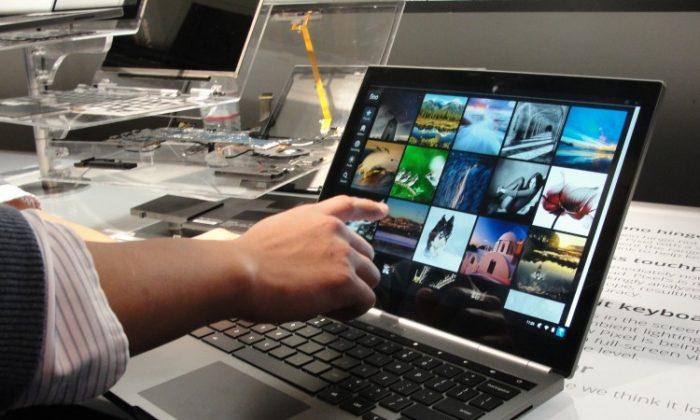After weeks of speculation, Google finally released its latest notebook, the Chromebook Pixel. And it is different from other Google products. “This is for power users we expect to live completely in the cloud,” Google Chrome senior vice president Sundar Pichai said. The premium product is made by Google itself and not through its partners like the previous Chromebook. Being a completely net-based device, the Pixel comes in two versions – Wi-Fi and LTE. LTE, commonly known as 4G LTE is a standard for high-speed date communication.
Specifications
Intel® Core™ i5 processor (Dual Core 1.8GHz)
Intel® HD Graphics 4000 (Integrated)
4 GB DDR3 RAM
32 GB solid state drive (64 GB for LTE model)
Gorilla® Glass multi-touch screen
Backlit Chrome keyboard
Fully clickable, etched-glass touchpad
HD Webcam
Headphone/microphone jack
Built-in microphone array
Integrated DSP for noise cancellation
Powerful speakers tuned for clarity
BATTERY: Up to 5 hours of active use (59 Wh battery)
NETWORK: Dual-band WiFi 802.11 a/b/g/n 2×2, Bluetooth® 3.0
BONUS: One terabyte of Google Drive cloud storage, free for 3 years
The display is certainly the most impressive part of the Pixel. It features a density of 239 pixels per inch on a 13” touch-screen, a bit more than the 220 pixels/inch on the Macbook Pro. The Pixel has an impressive resolution of 2560 x 1700 pixels. “Why we call it Pixel is because we don’t want users to have to deal with the Pixel,” Sundar Pichai said. “With the pixel, you can reach out, you can pan and zoom and it feels much more natural and intuitive as a user.”
Google was working with third-party application developers to tailor Pixel programs. “The goal is to get the Pixel in the hands of all our early adopters as well as developers,” Pichai said. “We think our ecosystem will respond well.”
The design of the Chromebook has drawn wide-spread appreciation. The anodized aluminum casing reveals no visible speakers, cooling vents and microphones and the touch-pad is glass.
“People will give up a MacBook Air for this,” Sundar Pichai said. “It will stand up well against a Macbook Air. Air doesn’t have touch-screen or a high resolution screen, so with Pixel you get a lot for your money.” “And since it’s based on Chrome OS, the Pixel boots up in seconds and never slows down, requires almost zero setup or maintenance, and comes with built-in virus protection. Best of all, it stays up to date with automatic updates every few weeks” says Google.
However analysts are not completely confident of the pure reliance on cloud, the lack of software to the new OS and the pricing that beats out even Apple. It does not feel wholly justified yet, as Darrel Ethrington writes at Tech Crunch, “For a machine aiming at power users, it’s a device surprisingly devoid of power features. ChromeOS is, for all its strengths, still essentially a browser, after all. This thing can’t run Photoshop, which you’d be able to do no problem if you spend $100 less and get a 13-inch MacBook Air. It can play back movies on that gorgeous screen, but not in as many file formats or with as much ease as you could manage with a Lenovo Yoga 13, also cheaper at $1,049.”
The Wi-Fi version retails at $1,299 and the LTE, expected to come in April, retails at $1,449. The Pixel is now available on Google Play and at select Best Buy locations in the U.S. and Currys PC World in the U.K.






Friends Read Free